Fusée de Dame - Comment Cultiver et Soigner Hesperis Matronalis
La Fusée de Dame est une plante populaire dans le monde entier. Elle est facile à cultiver et étonne par ses multiples fleurs et son magnifique parfum, qui est le plus intense le soir. Les fleurs attirent divers insectes et papillons qui volent fréquemment autour de cette plante. La Fusée de Dame n'a pas beaucoup de besoins, ce qui en fait une plante parfaite pour les jardiniers débutants. Vérifiez comment en prendre soin.
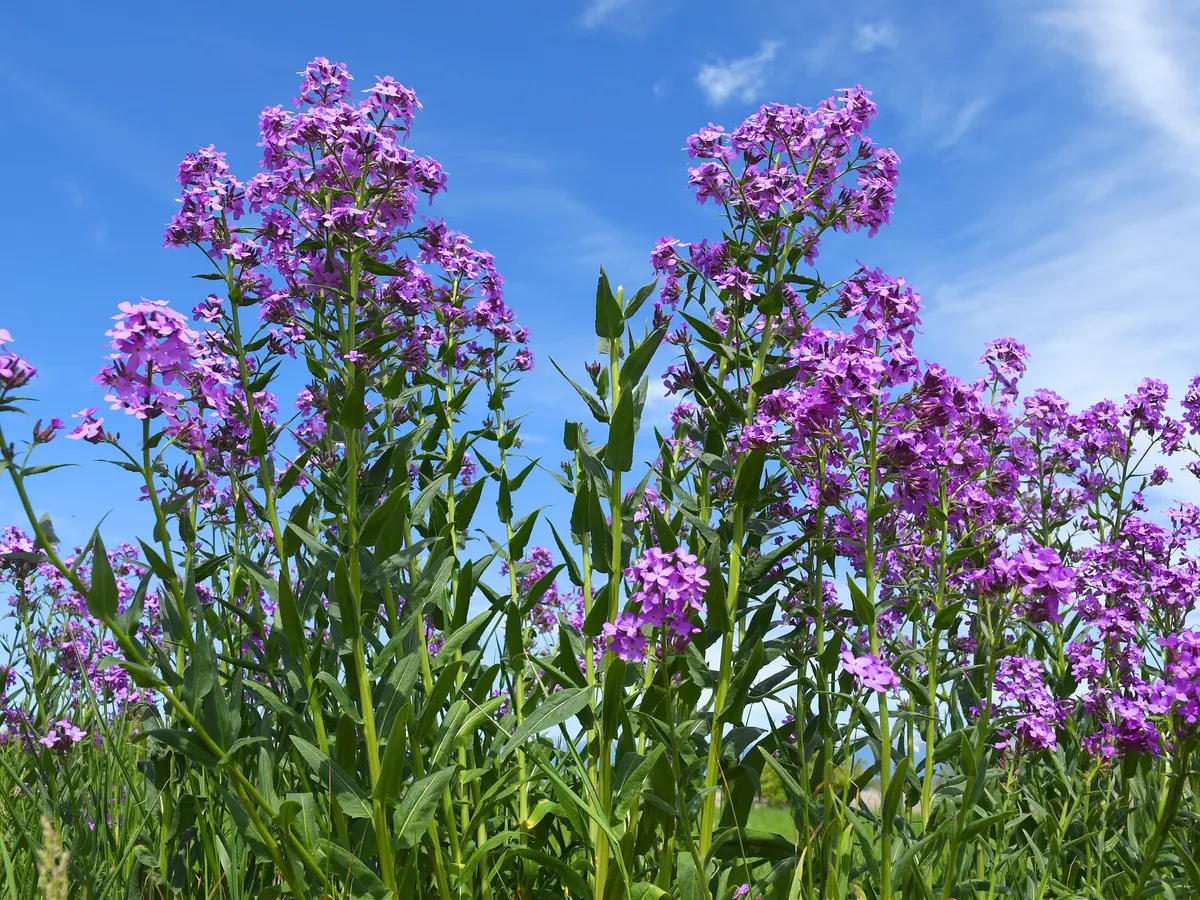
Fusée de Dame - origine et caractéristiques
La Fusée de Dame, plus précisément Hesperis matronalis est l’une des plus anciennes espèces végétales que l’on peut rencontrer dans de nombreux jardins du monde. Selon les estimations, elle est apparue pour la première fois en tant que plante cultivée dans la Rome antique, et elle est toujours très populaire dans divers pays, notamment en Europe.
La Fusée de Dame, également appelée violette de Dame et violette de Damas, est une plante vivace de la famille de la moutarde. Plantée dans un endroit du jardin, elle met deux ans à pousser. Elle fleurit après un an. Elle diminue après trois à quatre ans à partir de la plantation, donc si l’on souhaite continuer à profiter de sa vue dans le jardin, il faut la rajeunir. De nouvelles plantes doivent être ajoutées toutes les quelques années.
La première année, la Fusée de Dame développe des feuilles vertes, mais n’attendez pas de fleurs. La floraison commence la deuxième année, lorsque la plante développe une riche floraison. Elle peut atteindre 1 mètre de haut, ce qui est un avantage compte tenu de la densité des fleurs.
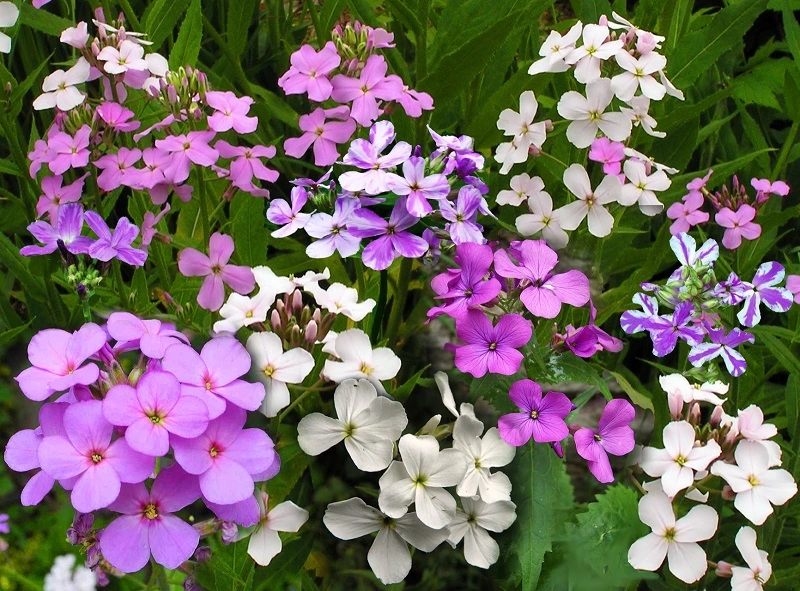
Fusée de Dame - les variétés les plus populaires
L’Hesperis matronalis existe en de nombreuses variétés. Trois d’entre elles sont particulièrement remarquables, et ce sont les plus populaires parmi les jardiniers. Le cultivar de base de cette plante développe des fleurs lilas. Cette variété est la plus courante dans les jardins. Les deux autres sont :
- Alba - une Fusée de Dame blanche populaire avec des fleurs de cette couleur,
- Alba Plena - une autre variété à fleurs blanches, mais avec une floraison plus complète et plus impressionnante.
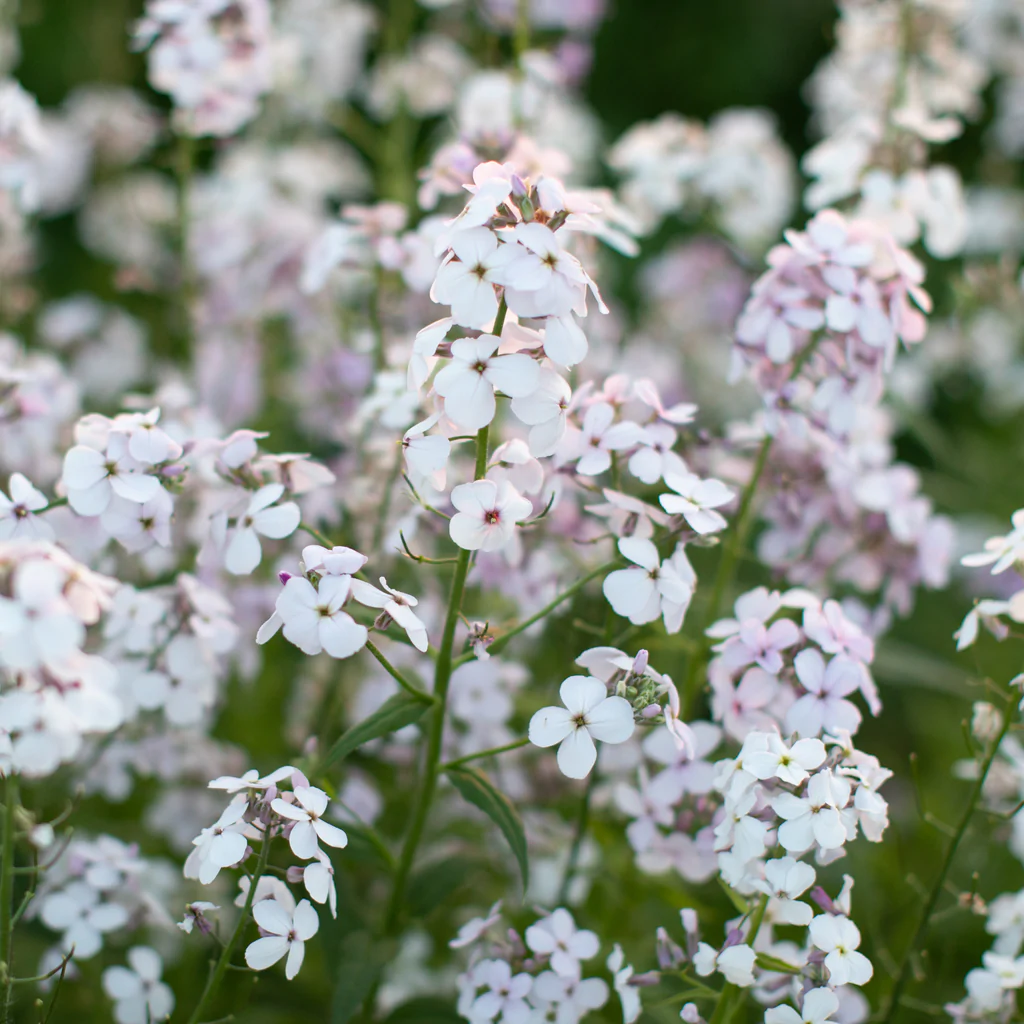
Fusée de Dame - les besoins de la plante et la culture
Vous vous demandez si la culture de la Fusée de Dame est compliquée ? La plante n’a pas besoin de beaucoup de choses pour son bon développement, c’est pourquoi elle est souvent choisie par les jardiniers - même les débutants. Il suffit de respecter quelques règles simples, et la plante se développera correctement.
Le sol pour la croissance et la culture de la plante doit être fertile. Veillez également à ce qu’il soit suffisamment meuble. Grâce à cela, l’eau ne restera pas dans les racines de la plante, ce qui pourrait être nuisible. Quant au pH du sol, il doit être alcalin ou neutre.
La Fusée de Dame préfère la mi-ombre, alors assurez-vous de choisir des endroits légèrement ombragés plutôt qu’en plein soleil, mais évitez les extrêmes et ne la plantez pas dans un endroit complètement sombre. Trop peu de soleil affecte la qualité de la floraison, et surtout, le nombre de fleurs. Le sol autour de la violette de dame doit également être régulièrement contrôlé et désherbé si nécessaire. En effet, la plante ne supporte pas les mauvaises herbes, et si elles poussent à proximité, elles pourraient entraver son développement.
L’Hesperis matronalis a besoin d’un support pour ses tiges, surtout pendant la période de floraison, afin de les protéger de la flexion et de la rupture. Cette plante est résistante au gel, ce qui est une bonne nouvelle pour les jardiniers. Grâce à cela, il n’est pas nécessaire de déplacer la plante vivace vers un endroit plus chaud.
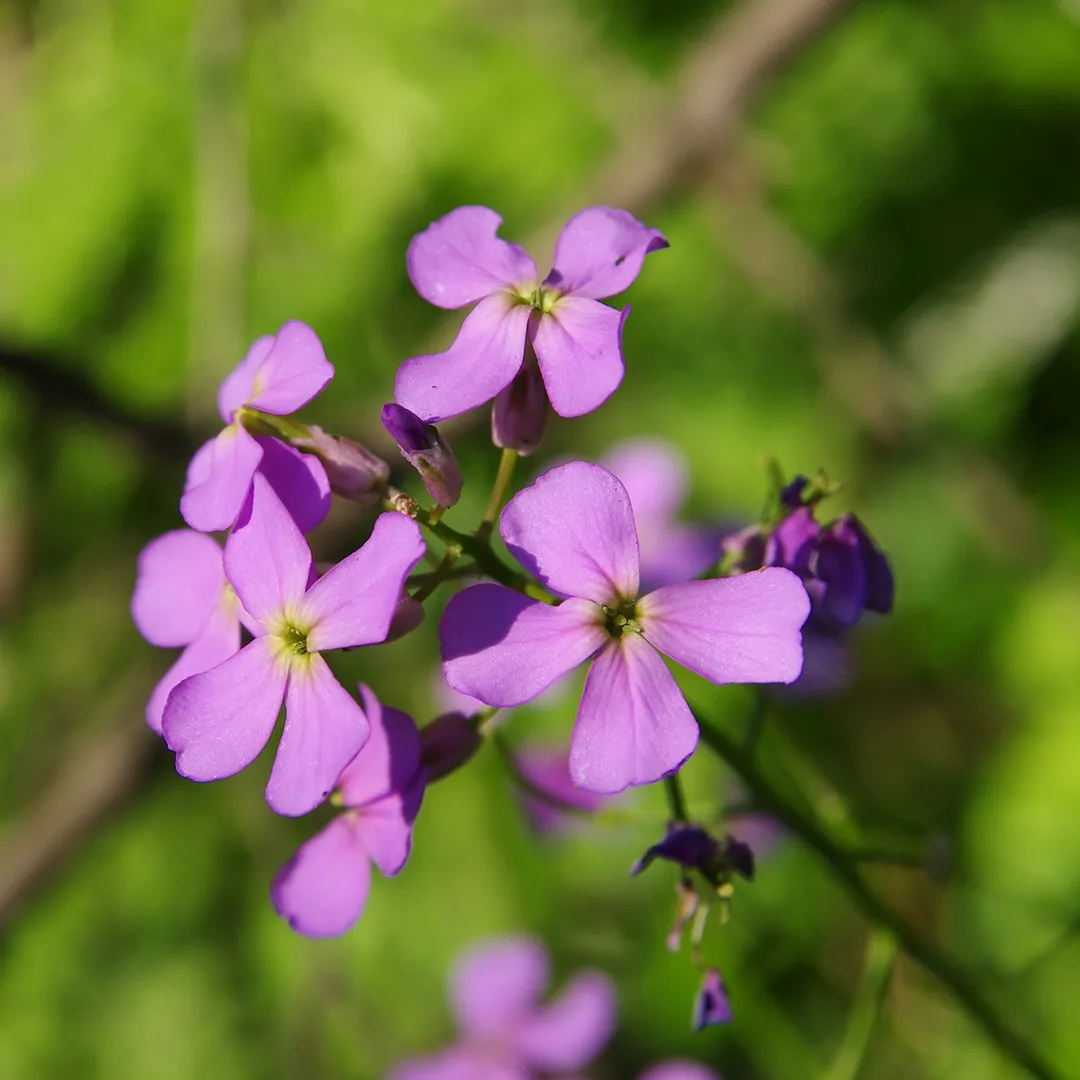
La Fusée de Dame a-t-elle besoin d’être arrosée et nourrie régulièrement ?
La Fusée de Dame préfère avoir un sol humide. Pour les jardiniers qui décident de la planter dans leur cour, cela signifie qu’ils doivent maintenir le sol à un niveau d’humidité adéquat. Il doit être toujours humide. Un endroit ombragé aide à maintenir cet état, car il protège le sol d’une évaporation intense de l’eau. Mais n’oubliez pas qu’un arrosage trop intense et de l’eau stagnante dans le sol ne sont pas souhaitables. Cela pourrait faire pourrir la plante vivace ou développer la moisissure grise.
La Fusée de Dame est une plante peu exigeante. Si elle est plantée au bon endroit, elle ne nécessite pas de stimulation supplémentaire par des engrais.
Fusée de Dame - propagation de la plante
Vous vous demandez comment propager la Fusée de Dame ? Vous pouvez semer ses graines directement à l’endroit visé. Prévoyez de planter les graines au printemps. Gardez à l’esprit qu’il s’agit d’une plante bisannuelle, qui se fane au bout de 3 ou 4 ans, ce qui signifie qu’il faut ajouter périodiquement de nouvelles plantes pour en profiter plus longtemps dans le jardin. Vous pouvez également préparer des semis en hiver et les planter à l’endroit prévu au printemps.
La Fusée de Dame se sème souvent elle-même. Les graines qui tombent commencent à germer après un certain temps.

Fusée de Dame - ce que vous devez savoir sur cette plante
La Fusée de Dame ne se contente pas d’être jolie et de sentir bon le soir. Rappelez-vous que ses fleurs sont considérées comme toxiques, mais que le reste de la plante est inoffensif - et c’est pour cette raison qu’elle est souvent utilisée de diverses manières. Néanmoins, assurez-vous d’être prudent avec elle.
Les graines comestibles de la plante contiennent jusqu’à 50 % d’huile et sont généralement utilisées dans les salades. Les feuilles sont riches en vitamine C. Leur goût est légèrement amer. Elles constituent une excellente décoration pour les desserts ou un ajout aux salades. Notez que lorsqu’elles sont consommées en excès, elles peuvent provoquer des vomissements. La plante est également transformée en huiles essentielles et utilisée dans la production de parfums.
Quels sont les ravageurs et les maladies susceptibles de nuire à la Fusée de Dame ?
La Fusée de Dame est une plante relativement résistante aux ravageurs et aux maladies. La plupart des situations dans lesquelles la plante se fane sont le résultat d’un mauvais entretien. Un arrosage trop intense et de l’eau stagnante peuvent entraîner le développement de champignons ou le pourrissement du système racinaire. Les pucerons sont les seuls parasites potentiels qui peuvent apparaître sur ses tiges.
Si la plante est plantée dans la pénombre, sa croissance et sa qualité de floraison seront bien moindres que si elle est plantée dans un endroit légèrement ombragé. N’oubliez pas que son doux parfum attire divers insectes.
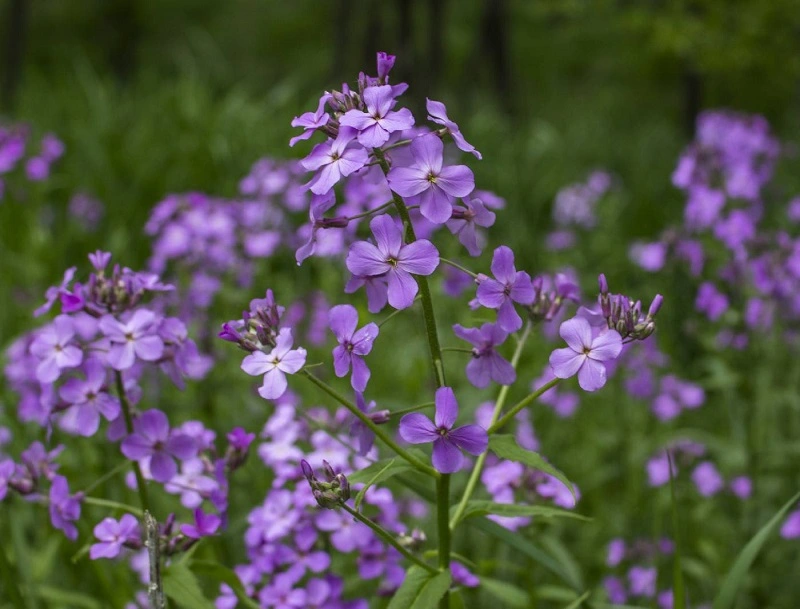
📍 A quoi ressemble la fusée de Dame ?
La Fusée de Dame est une plante qui peut atteindre une hauteur de 60 à 100 cm (environ 2 à 3 pieds). Elle possède des poils caractéristiques et des feuilles lancéolées. Les tiges avec florescence apparaissent au cours de la deuxième année de sa croissance, développant jusqu'à 30 fleurs parfumées sur une seule tige.
📍 Quelle est l'odeur de la Fusée de Dame ?
La Fusée de Dame est une plante populaire fréquemment plantée dans les jardins domestiques - principalement en raison de sa forte odeur qui apparaît le soir. Les fleurs de la plante sentent le lys, mais le parfum comporte également une note de rose. L'odeur est douce, grâce à laquelle elle attire divers insectes, dont les papillons.
📍 Quand planter la Fusée de Dame ?
La Fusée de Dame est une plante vivace. Les graines sont récoltées en été, et plantées en hiver. Une fois que les semis ont grandi et se sont développés, ils peuvent être plantés à l'endroit voulu au printemps. La plante se sème souvent elle-même, mais vous pouvez encourager le processus.
📍 Quand la Fusée de Dame fleurit-elle ?
La belle odeur n'est pas le seul avantage des violettes de Damas. Elles fleurissent au printemps, à partir du mois de mai. On peut profiter des belles fleurs et de leur odeur du soir pendant trois mois.
Articles de fond




